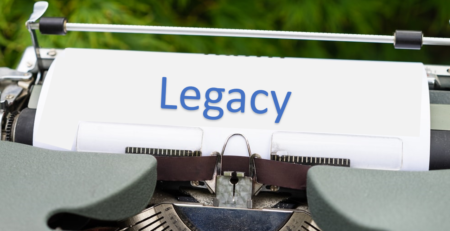How to Pay Less in Taxes (or Six Tax Saving Strategies for Real Estate Investors)
Alina Trigub2020-12-28T02:51:00+00:00Six Tax Saving Strategies for Real Estate Investors
Most real estate investors own property personally or in an LLC (Limited Liability Corporation). Because in both instances taxes are paid on a personal (not corporate) level, the new Tax Cuts & Job Acts (TCJA) tax law could be a win with its reduced personal tax rates; that is if you know how to take advantage of the tax breaks. Below, we explore a few strategies that real estate investors may decide to undertake to save on their taxes:
1. Improve/reposition the property – Depreciation
As I wrote in one of my previous articles, one of the real estate strategies is “repositioning” where you, the investor, add value to the property by altering anything from the property’s physical appearance to its operations. You can then maximize the value of your investment by depreciating such improvements. So what are some examples of “repositioning”? In my lifetime, urban factories and manufacturing buildings were just that, but now such spaces in terrific demand as homes. Building owners have a great opportunity to reposition their factory to a highly sought after living space. Another example is to improve a low-rent building that is full of tenants. The goal in this case is to mitigate the costs while working on the building with minimal disturbance to the existing tenants, so that you can still benefit from an existing cash flow. A smooth transition from a low-rent tenant to a higher-paying is the most basic way to build a considerable increase in profit.
“Depreciation” is a widely known expense for a commercial property investment. Depreciation is not limited to real estate, but real estate investing uniquely benefits from depreciation because the initial outlay is huge and is often acquired with debt. The beauty of this process is that properties can depreciate even as their value is actually appreciating. Even better, this is not a one-time benefit; depreciation distributes the tax deduction across the useful life of the property.
For instance, a $1MM building depreciated over 27.5 years provides tax shelter of about $36,364 per year.
Depreciation ($1MM property) = $1,000,000 / 27.5 years = $36,364
If you had 3 such rental buildings, you’d shelter $109,092 of annual income from taxes
Depreciation (for 3 $1MM properties) = 3 *$36,364 = $109,092
and potentially save $27,273 on your tax bill (at a 25% rate) (although be mindful of the gotchas to what and how much you can depreciate)!
2. Perform Cost Segregation Study – Bonus/Accelerated Depreciation
It’s important not to underestimate the importance of cost segregation and remember that the Internal Revenue Service (IRS) has very specific regulations around. For example, last year’s Tax Cut and Jobs Act (TCJA) increased the write off of certain commercial property improvement costs from 50% to 100% and allowed to instantly write off certain components in properties purchased after September 2017 in cost segregation reports. Basically, there is a bunch of components inside and around the building. You now can write these components off a lot quicker than the building itself, which could be 39 years, and used to be 15 years or even as low as 5 for the other stuff, but thanks to TCJA, you can instantly depreciate the other stuff.
For instance, an industrial building was purchased for $5MM. Typically it is depreciated over 39 years. The depreciation will be: $5MM / 39 years = $128,205 at year 1.
If we were to conduct a cost segregation study on this building, then we would determine that $500,000 of the building has 5-year life, another $500,000 has 7-year life, and yet another part of the building has 15-year life. This brings the accelerated depreciation amount to $893,685 at year 1.
Benefits of leveraging Cost Seg study = $893,685 – $128,205 = $765,480
The bottom line is that cost segregation is a highly a valuable tool for rental property investors since it allows you to accelerate depreciation for certain parts of the property that normally span across decades. In so doing you are able to reduce your annual tax obligations a lot sooner. Keep in mind that if you depreciate a property and then sell it for above its depreciated value, IRS will come after that gain through the depreciation recapture tax.
3. Defer taxes by leveraging the power of 1031 exchange…and more!
If you are like every other taxpayer in the United States, you want to minimize your tax liability, and if you are like every other real estate investor of property held for business use, your goal is to defer the gain on the property’s sale and subsequent acquisition of “like-kind” property. That’s where IRS Section 1031comes in; it allows these types of gains deferrals. IRS defines “like-kind” as:
“Like-kind property is property of the same nature, character or class. Quality or grade does not matter. Most real estate will be like-kind to other real estate. For example, real property that is improved with a residential rental house is like-kind to vacant land.”
As you likely imagine, exchanges are pretty much a typical property sale followed by another property purchase, transacted within certain timeframes and linked together by legal documentation. So a 1031 exchange allows you to defer the gain as long as the newly purchased property is held, and if you eventually sell that (presuming it still qualifies), you can use the 1031 exchange again.
If you know anything about tax laws, you know that there is always a catch.
In this case, keep in mind that if you exchange improved land with a building for unimproved land without a building, the depreciation you’ve previously claimed on the building will be recaptured as ordinary income.
Nonetheless, there are just too many benefits to Section 1031 if you play your cards right. While deferring the gain is the most attributed benefit to Section 1031, there are several other opportunities that provide the following exchange benefits:
• Many investors use the 1031 exchange to trade up and into a property that will have a higher cash flow than the sold property, such trading a 10-unit building at the Jersey Shore but a walking distance to the ocean for a 10-unit building with ocean views right next to the ocean.
• The deferred gain can be used for a high-priced replacement property that generates more cash flow from Day 1 and benefits from higher long-term appreciation.
• Many times, a buyer using 1031 exchange funds is preferred because they have money waiting an account and they want to close quickly.
• A 1031 exchange not only defers the capital gain (or a loss), but also defers the depreciation recapture for the property you are selling which is usually recaptured at 25% on real estate.
• As the deferred gain does not increase a taxpayer’s income, it keeps you out of the highest income tax bracket and capital gain rates.
• A 1031 exchange gives you the opportunity to purchase your replacement property using pre-tax dollars.
• As I mentioned, the gain is deferred as long as you own the property, so when you eventually sell it, if the property qualifies, you can exchange it again. Therefore, the gain can be deferred indefinitely and since most of us prefer to pass on, when that day comes, you can show your children that everything that you did was entirely for them; your heirs will inherit the property and get a stepped-up basis and the gain will be forgiven (a little more on that later in my article).
4. Use HELOC on your existing investment property where the interest is tax-deductible
This one is fairly complicated. Ever since the new Tax Plan went into effect earlier in 2018 many investors are inquiring the IRS whether the Home Equity Line of Credit (HELOC) interest can be deducted. First let’s travel to pre-TCJA…
Before 2018 you could claim itemized qualified residence interest deductions on up to $1 million of home acquisition or improvement debt of your first or second residence. On top of that, regardless of how you used the loan, you could also claim itemized qualified residence interest deductions on up to $100,000 of home equity debt for regular tax purposes. Of course, as far as Alternative Minimum Tax (AMT) is concerned, you could only deduct the interest if the home equity loan was used only to buy or improve your first or second residence.
Today starting with 2018, TCJA will allow interest on up to only $750,000 of home acquisition or improvement debt for your first or second residence to be deductible. Sadly, the TCJA generally eliminates the prior-law provision that allowed you to claim itemized qualified residence interest deductions on up $100,000 of home equity debt.
But all is not lost, because you can still tap into a couple of grandfathered rules. Firstly, as long as your property purchase closed before April 1, 2018, TCJA changes do not affect up to $1 million of property acquisition debt that was taken out either prior to December 16, 2017 or under a binding contract that was in effect before December 16, 2017.
Secondly, TCJA changes do not affect up to $1 million of acquisition debt that was taken out before December 16, 2017 and then refinanced, as long as the initial principal balance of the new loan does not exceed the principal balance of the old loan at the time of the refinancing.
5. Perform cash out / refi on your existing property – by pulling equity you get tax-free money
Getting a tax-free loan sounds pretty awesome. Many lenders now offer investment property owners the chance to cash in on their non-owner occupied homes’ equity, so a cash-out refinance could be a great strategy for you. Basically, when you refinance a mortgage, you are getting a new loan that will replace your old one, and if the amount you own on the old mortgage is less than the new loan balance…you guessed it; you keep the difference. So the terminology is fairly self-explanatory; since equity becomes cash, this loan is called a cash out refinance.
I know that the sceptic in you is thinking that there are no such thing as tax-free loans, and you are sort of correct. In truth, you aren’t getting anything more than what you already own; instead all that you are doing is transferring an asset (equity) into a different asset (cash), while your loan increases. But this is still a very exciting transaction since you aren’t taxed on the loan money, and in fact, since this is a mortgage, you maybe be able to get tax benefit with a mortgage interest deduction.
For an investment property, lenders will typically loan up to 75% of the appraised value of the property. As is usual, the more equity you have, the better position you’ll be in to qualify for a new loan. To put it simply, your property must be in good shape equity-wise before you get started, and the best candidates for cash out are properties with 30-40% equity.
Cash out refinancing may provide opportunity to grow your rental income, for example, if the cash is used to improve the property or buy another one. Many cash out refinance investors improve their positive cash flow by lowering their rate while taking cash out.
6. Walk on through the Pearly Gates (leaving your Earthly Real Estate Possessions to your Heirs)
As I mentioned earlier in my article, passing on while holding real estate is a pretty good tax strategy. Instead of facing the tax issues of recaptured depreciation or capital gains tax, your heirs instead get a stepped-up basis.
For example, let’s say you invested $100,000 in a rental building. Forty years later you pass on peacefully in your sleep knowing that the building is now worth $500,000. Shortly after your funeral, when your heirs sell the house, they wouldn’t pay capital gains tax on the $400,000 gain, and instead, their basis would now be $500,000. Which means they could sell it for $500,000 and have no capital gains tax to pay whatsoever.
There is more good news – although inherited assets are subject to estate taxes, over $11 million of assets are exempt from any estate taxes! That’s a lot of assets on which your grieving family will not be paying any taxes.











